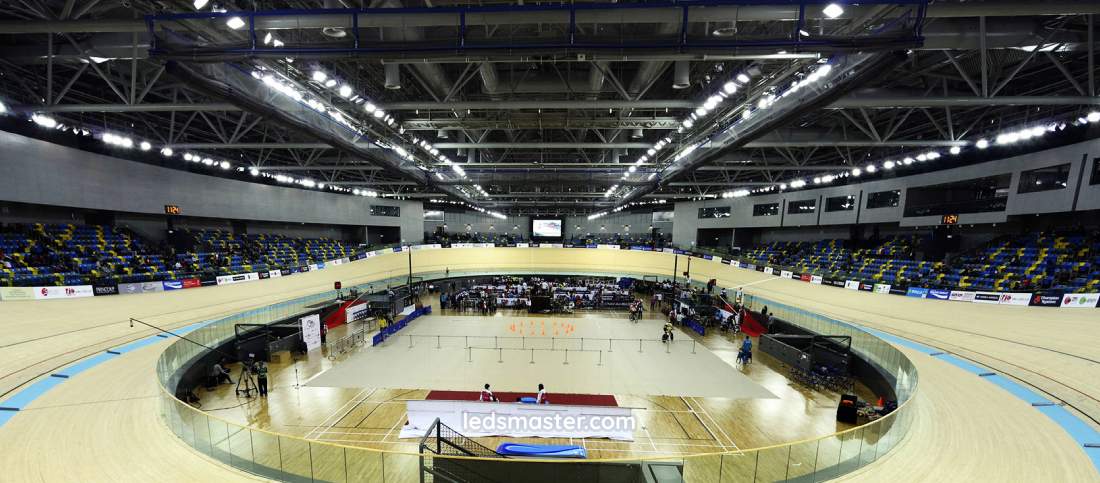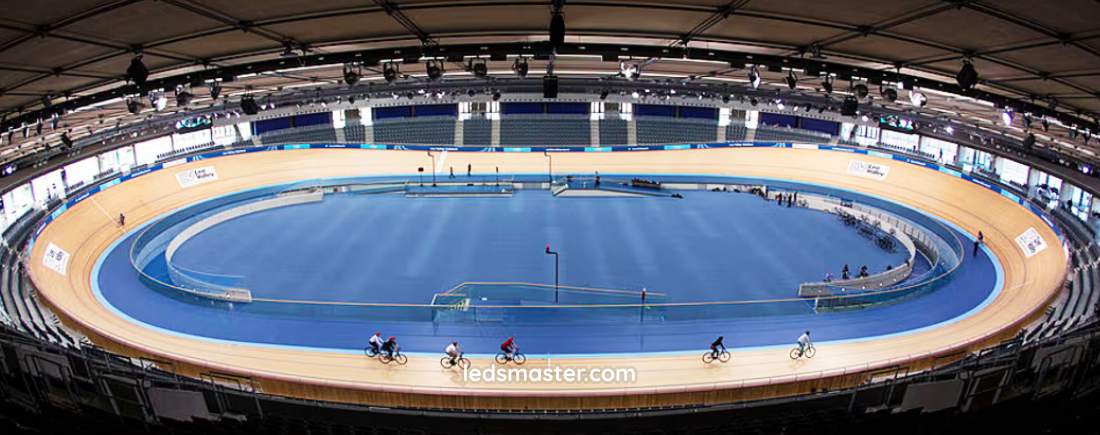Illuminate your velodrome with precision and brilliance using our state-of-the-art velodrome lighting solutions. Designed to meet the exacting standards of professional cycling arenas, our lighting systems offer unparalleled uniformity, optimal color temperature, and energy efficiency. Whether for high-speed competitions or rigorous training sessions, our lights ensure perfect visibility, enhancing safety and performance for cyclists and spectators alike. Elevate your velodrome experience with lighting that’s engineered for excellence.
Velodromes, the specialized arenas for track cycling, demand precise and high-quality lighting to ensure safety, visibility, and an optimal environment for both athletes and spectators. Effective velodrome lighting enhances the overall experience, highlighting the speed and skill of cyclists while maintaining a consistent visual field. This article delves into the essential aspects of velodrome lighting, including lighting design, color temperature, installation, and other critical considerations.
Get your complimentary lighting design today
Table of Contents
ToggleUniform lighting is paramount in a velodrome to avoid any visual disturbances that could distract cyclists or affect their performance. The lighting design should ensure that there are no dark spots or excessively bright areas on the track. A well-designed lighting system provides even illumination across the entire track, promoting a clear and consistent view for both participants and viewers.
The placement of lights in a velodrome is a critical factor in achieving uniform lighting. Lights are typically mounted on the ceiling or high structures around the track, positioned at strategic angles to cover the entire area effectively. The design must minimize shadows and glare, which can be distracting and potentially hazardous for cyclists traveling at high speeds. Lights should be angled to reduce direct eye exposure while ensuring the track surface is well-lit.
The lux level, a measure of illuminance, is a key consideration in velodrome lighting design. The International Cycling Union (UCI) recommends a minimum of 1000 lux for competition velodromes to ensure adequate visibility. For training velodromes, a lower lux level may be acceptable, but it should still provide sufficient lighting to maintain safety and performance standards.

Color temperature, measured in Kelvin (K), affects the visual perception and ambiance of the velodrome. For velodrome lighting, a color temperature between 5000K and 6500K is typically ideal. This range produces a bright, daylight-like light that enhances visibility and reduces eye strain for both athletes and spectators. It helps in accurately rendering colors, which is essential for televised events and ensuring that cyclists can easily see the track and surroundings.
Maintaining a consistent color temperature across all lighting fixtures is crucial to avoid visual discomfort and maintain a professional appearance. Inconsistent color temperatures can create distracting variations in the lighting, affecting both the performance of cyclists and the viewing experience of the audience.
Choosing the right fixtures is essential for effective velodrome lighting. LED lights are preferred due to their energy efficiency, longevity, and superior light quality. LEDs also offer better control over light distribution and color temperature, making them suitable for the specific requirements of velodrome lighting.
The installation process involves securely mounting the fixtures at appropriate heights and angles. The wiring should be meticulously planned to ensure safety and reliability. It is essential to use high-quality, weather-resistant materials to withstand the conditions within the velodrome. Proper installation minimizes maintenance needs and ensures the longevity of the lighting system.
Advanced control systems can enhance the functionality of velodrome lighting. These systems allow for adjustable lighting levels, enabling operators to tailor the lighting for different events, training sessions, and maintenance activities. Dimming capabilities and programmable settings can help save energy and extend the life of the lighting fixtures.

Regular maintenance is vital to ensure the lighting system operates at peak performance. This includes routine inspections, cleaning of fixtures, and timely replacement of any faulty components. Maintenance schedules should be adhered to rigorously to prevent any unexpected failures that could disrupt events or compromise safety.
Durability is a significant factor in fixture selection. Velodrome lights must withstand vibrations, dust, and other environmental factors typical in such settings. LED fixtures, known for their robustness and long lifespan, are ideal for velodromes, reducing the frequency of replacements and maintenance interventions.
Energy efficiency is not only beneficial for reducing operational costs but also for environmental sustainability. LED lighting systems consume significantly less power compared to traditional lighting options, making them a cost-effective and eco-friendly choice for velodromes.
Incorporating smart technology in velodrome lighting systems can further enhance energy efficiency. Motion sensors, daylight sensors, and automated control systems can adjust the lighting based on real-time needs, ensuring that lights are only used when necessary. This reduces energy consumption and lowers the overall carbon footprint of the facility.
Emergency lighting is a critical aspect of velodrome safety. In the event of a power outage or emergency situation, a reliable backup lighting system should be in place to ensure the safe evacuation of athletes, staff, and spectators. Emergency lights must be regularly tested and maintained to guarantee their functionality when needed.
Velodrome lighting systems must comply with relevant safety and performance standards set by authorities such as the International Cycling Union (UCI) and local regulatory bodies. Adherence to these standards ensures that the lighting system meets the required safety, performance, and quality benchmarks, providing a safe and reliable environment for all users.
Effective velodrome lighting is a blend of precise design, appropriate color temperature, careful installation, and ongoing maintenance. By focusing on uniform lighting, suitable color temperatures, and robust fixtures, velodromes can provide a safe, visually appealing environment for cyclists and spectators alike. Energy efficiency and safety considerations further enhance the overall functionality and sustainability of the lighting system. As technology advances, the future of velodrome lighting will likely see even more innovations, ensuring that these specialized arenas continue to shine brightly and safely for years to come.